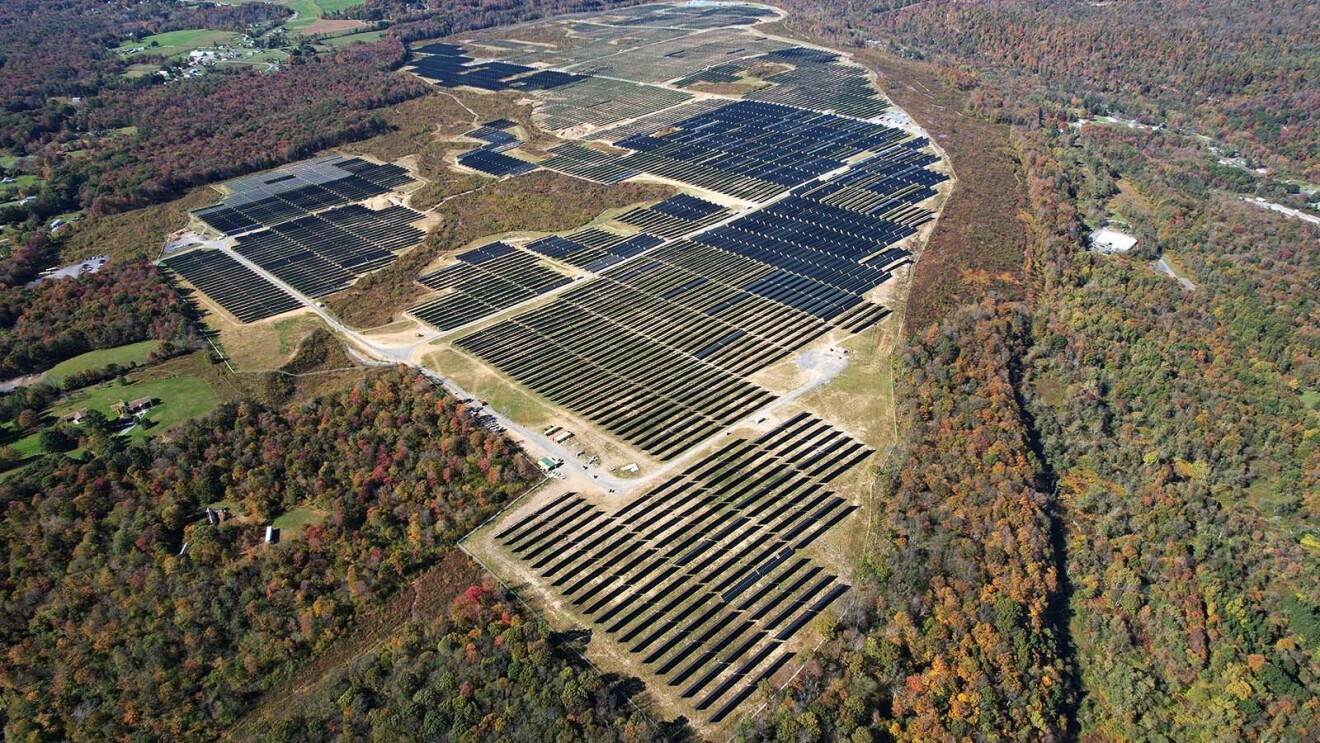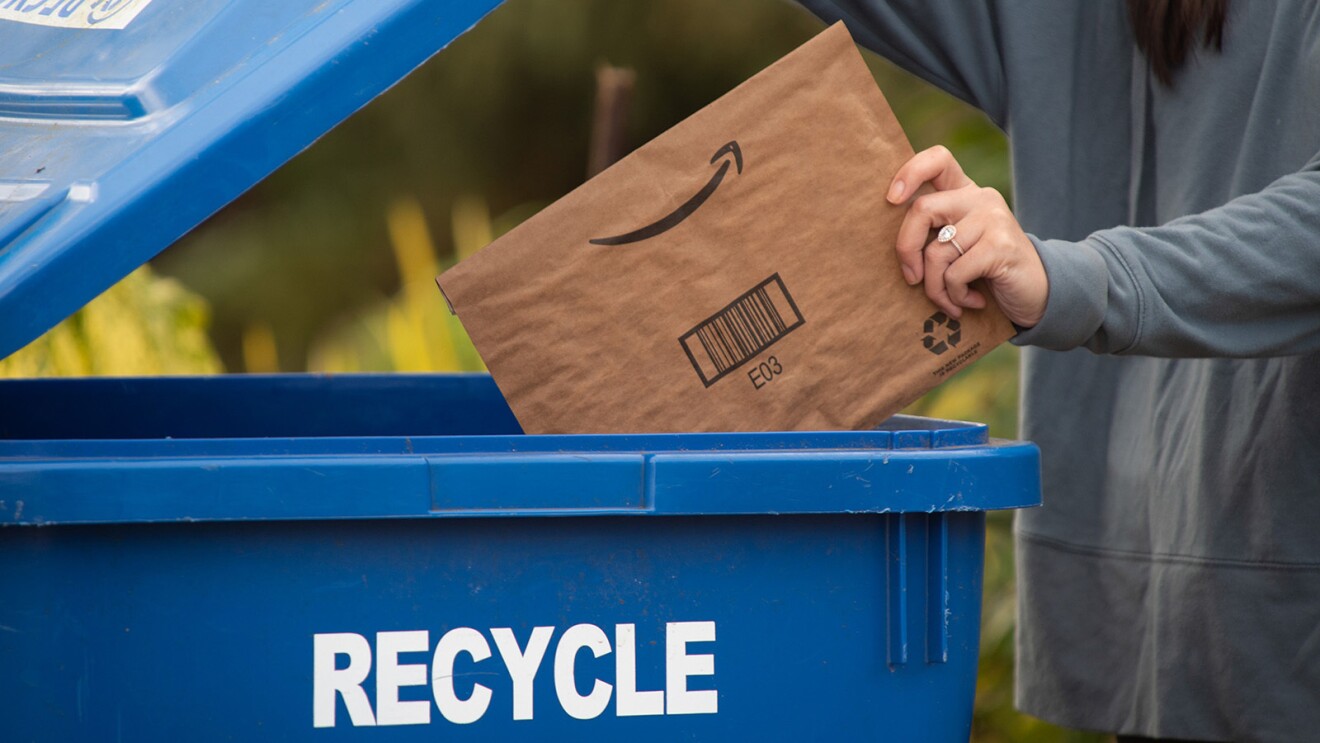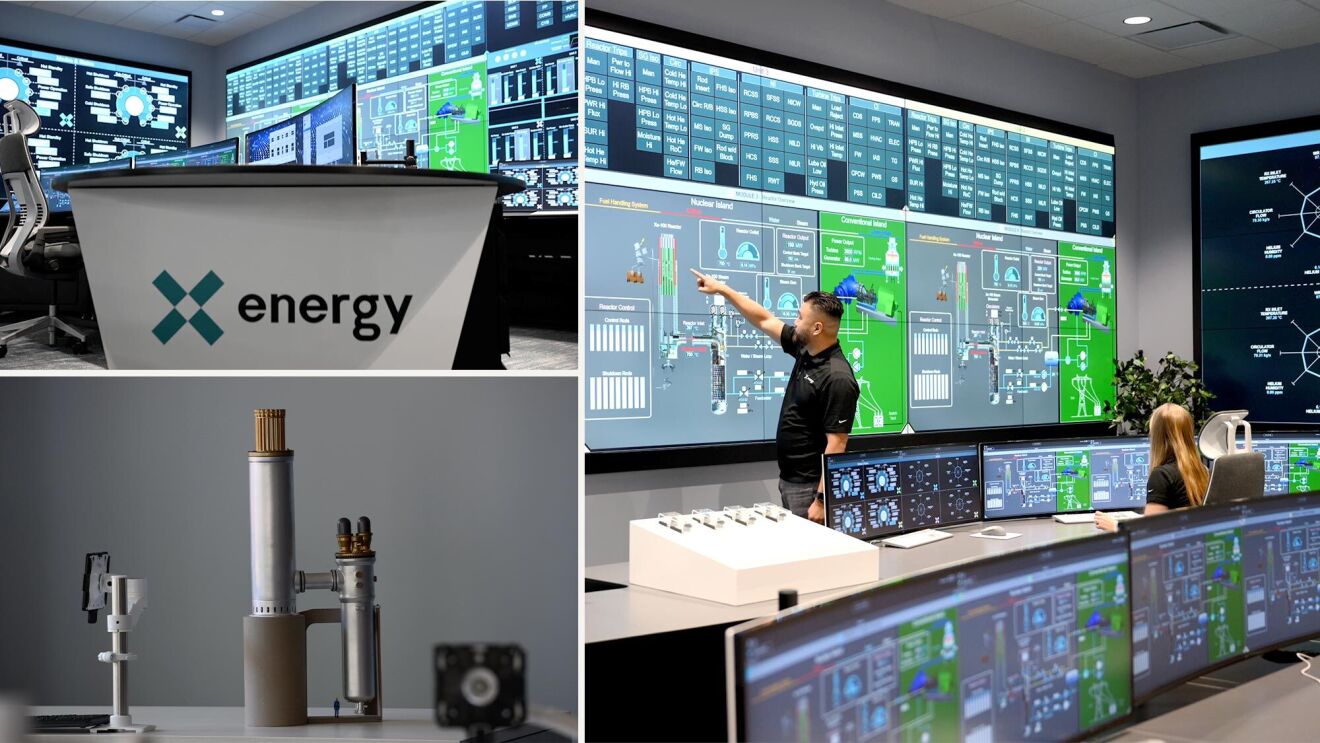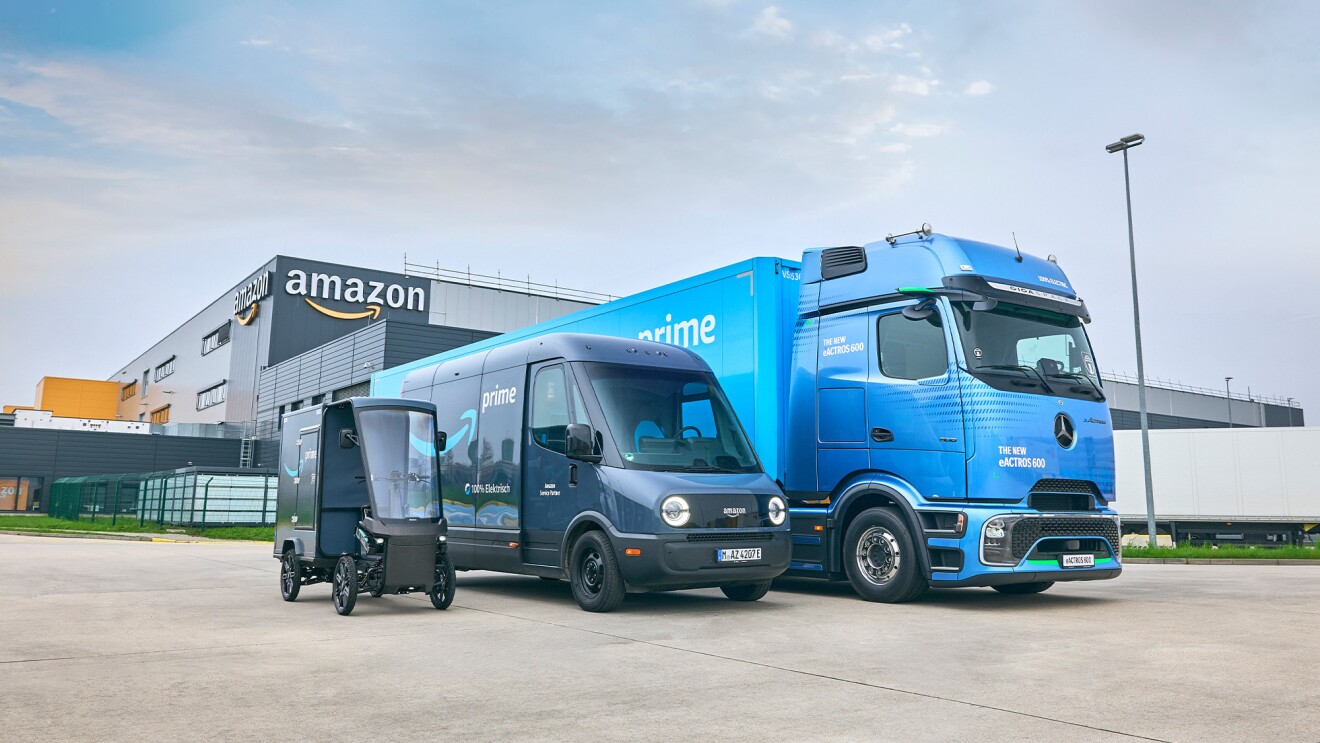Amazon invested in more than 100 new solar and wind energy projects in 2023, becoming the world’s largest corporate purchaser of renewable energy for the fourth year in a row. Amazon’s investments include the company’s first brownfield project—which will repurpose a previously polluted Maryland coal mine site into a solar farm—as well as Amazon’s first renewable energy project in South Korea.
The company now has more than 500 wind and solar projects globally, and once operational, they are expected to generate more than 77,000 gigawatt-hours (GWh) of clean energy each year, or enough to power 7.2 million U.S. homes.
Since 2020, Amazon has purchased more renewable energy than any other company, according to BloombergNEF and publicly available sources. The projects are moving Amazon closer to having 100% of the electricity powering its operations be attributable to renewable energy sources by 2025. The projects are already helping power Amazon Web Services (AWS) data centers, Amazon fulfillment centers, physical stores, and corporate offices, while also providing new sources of clean power to local communities where the projects are located.
Amazon’s solar and wind farms have also helped generate more than $12 billion in estimated economic investment globally from 2014 through 2022, and supported 39,000 full-time equivalent (FTE) jobs in 2022 alone, according to a new economic model developed by Amazon.
“Amazon’s investments in solar and wind projects are helping power our operations, while also providing new sources of clean energy to the grid, spurring economic growth, and supporting jobs in the communities where our customers live and work,” said Adam Selipsky, CEO of AWS. “More than 90% of our operations were powered by renewables last year, but we’re not done. We’re focused on continuing to find innovative ways to bring new projects online, address grid constraints, and work with policymakers to mitigate the impacts of climate change, all of which is helping Amazon move closer to achieving 100% renewable energy by 2025.”
“Amazon’s renewable energy investments continue to bring new solar and wind projects to market at a rapid pace and cement the company as a global leader in this space,” said Kyle Harrison, head of sustainability research at BloombergNEF. “Despite supply chain challenges, infrastructure hurdles, and rising prices over the past year, Amazon’s continued renewable commitments demonstrate how a corporation can help accelerate society’s transition to a clean energy future.”
To date, Amazon has expanded its renewables portfolio into 27 countries and more than 20 U.S. states, with new projects in Arkansas, Georgia, Maryland, Michigan, Mississippi, Missouri, Ohio, Oklahoma, and Virginia so far this year, as well as Canada, Greece, and South Korea. Here are a few of the exciting projects Amazon is working on.
Converting a coal mine site from brownfield to solar farm
Amazon recently announced its first renewable energy project built on a brownfield—land that has been abandoned due to industrial pollution. Amazon Solar Farm Maryland–CPV Backbone is being built on the site of the recently closed Arch Coal Mine in Garrett County, Maryland. The 120-year-old mining site was previously contaminated with more than 45 acres of coal refuse, which has since been reclaimed.
01 / 02
The U.S. Environmental Protection Agency (EPA) estimates that there are more than 450,000 brownfields in the U.S., which is an emerging opportunity for solar energy projects. Brownfields—which can include abandoned factories, mines, or landfills—are often located near power lines and public roads, making it easier to connect a project to the grid and turn unused land into an economic opportunity for local communities.
The CPV Backbone project is expected to be the largest solar farm in Maryland once completed, according to publicly available data from the Energy Information Administration and PJM, and it will feature more than 300,000 solar panels. It’s also expected to employ more than 200 skilled workers during peak construction activities, provide millions of dollars in local tax revenue, and help avoid more than 133,000 tons of CO2 each year—the equivalent of taking more than 26,000 cars off the road, according to the developer Competitive Power Ventures (CPV).
Creating 1,000 jobs in Brazil with a new wind project
 Wind turbines generate clean energy in the Rio Grande de Norte region of Brazil.
Wind turbines generate clean energy in the Rio Grande de Norte region of Brazil.An estimated 1,000 jobs have been created in Brazil during the construction of a new wind farm, located within the Seridó Wind Complex. According to the developer, nearly 50% of those jobs were filled by workers from local communities in the countryside of the Rio Grande do Norte region. Elera Renováveis, the developer, used a drone to install the overhead transmission line conductors for the wind farm, and the wind turbines are 150 meters in diameter—the length of nearly 1.5 football fields. This marks Amazon’s second renewable energy project in Brazil.
Rapidly scaling clean energy in the Asia-Pacific region
Amazon added more than a dozen new clean energy projects across the Asia-Pacific region so far this year. In South Korea, Amazon announced its first renewable energy project in the country, which will create an estimated 2,400 jobs during construction, according to the developer.
In India, Amazon accelerated its clean energy investments over the past year and announced seven utility-scale renewable energy projects in the country since September 2022, including a 198 megawatt (MW) wind farm in Osmanabad. The company also invested in dozens of solar projects on the rooftops of local Amazon facilities, making Amazon the largest corporate purchaser of renewables in India, according to BloombergNEF and publicly available data, with a total of 1.1 gigawatts (GW) of clean energy capacity purchased to date across India.
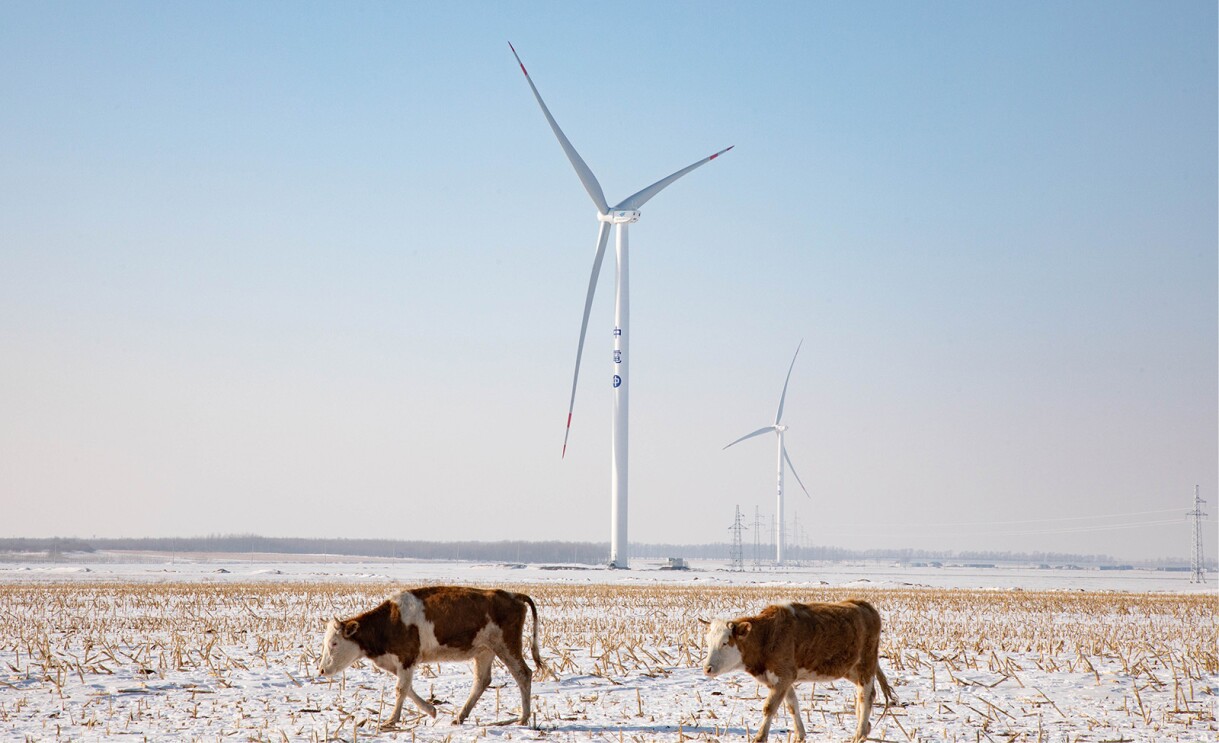 Cows graze under wind turbines at the Amazon Wind Farm China–Qian'an in China.
Cows graze under wind turbines at the Amazon Wind Farm China–Qian'an in China.In China, Amazon announced two new wind farms, including Amazon Wind Farm China–Daqing, which began operating in March 2023, and Amazon Wind Farm China–Bobai. Amazon also invested in new solar projects in Australia, Japan, and New Zealand.
Surpassing 4 GW of renewable energy in Texas
Amazon invested in 11 utility-scale projects in Texas, which includes the company’s third-largest solar project worldwide—Amazon Solar Farm Texas–Outpost, a 500 MW capacity solar farm in Webb County, Texas. Amazon is also investing in a new wind farm and eight additional solar farms in Texas. The company now has more than 20 renewable energy projects across the state, and once operational, they are expected to generate enough clean energy to power more than 800,000 Texan households—more than the number of households in the Texas cities of Fort Worth and Austin combined.
In addition, the largest renewable energy project in Amazon’s global portfolio—Amazon Wind Farm Texas–Great Prairie—recently began operations in Hansford County, Texas. The project has more than 350 wind turbines and more than 1,000 MW of total capacity. It’s projected to provide an estimated $70 million in additional tax revenue over the next 30 years, according to the developer NextEra.
Bringing clean energy projects to fossil fuel–powered grids
A growing number of Amazon’s solar and wind projects are being launched in regions where the electric grid is still heavily dependent on fossil fuels, which means the projects are making a bigger impact on lowering carbon emissions from the local power sector.
For example, Amazon recently announced its first utility-scale renewable energy project in Greece, where the majority of the region’s power comes from carbon-intensive coal and oil. When located in Greece, Amazon’s solar project is expected to help the region avoid more than 16,000 tons of carbon each year. That’s nearly six times more carbon avoided than if the same project was located in a country like Sweden, where the grid is already powered with a higher concentration of clean energy sources.
As part of the company’s broader effort to help rapidly decarbonize power grids, Amazon recently helped co-found the Emissions First Partnership, a coalition of companies committed to modernizing the greenhouse gas accounting standards for the power sector, which will encourage corporations to invest in renewable energy projects in markets where they can help decarbonize the power system faster—a step that is crucial to addressing climate change.
Amazon’s renewable energy investments are part of The Climate Pledge, Amazon’s commitment to reach net-zero carbon by 2040—10 years ahead of the Paris Agreement.
Trending news and stories
- ‘Young Sherlock’ premieres March 4: How to stream the Guy Ritchie series on Prime Video
- Alexa+ can now answer your Ring doorbell and talk to visitors
- ‘Beast Games’ Season 2 is coming to Prime Video—See the new trailer
- How Amazon Pharmacy has helped customers save more than $100 million on prescription medications like GLP-1s and insulin





